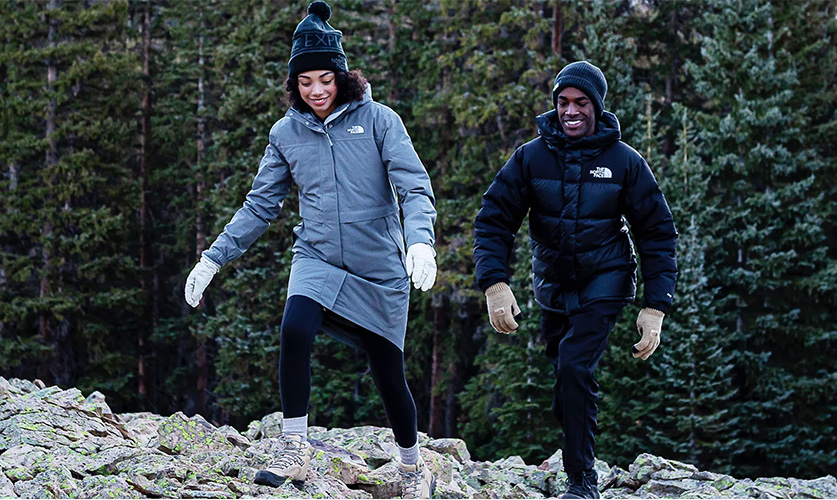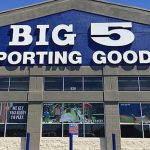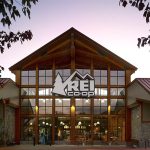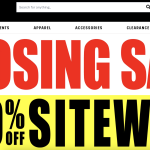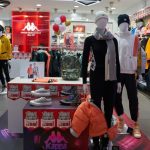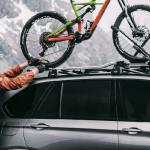VF Corp. reported sales dropped 5.8 percent in its fiscal third quarter ended December 26 and lowered its full-year revenue outlook on Vans. However, the company raised its outlook for The North Face, lifted its overall earnings and sales guidance for the year and predicted a return to positive growth in the current fourth quarter.
“VF’s performance in the third quarter is largely ahead of expectations. Despite other COVID-19 related disruption to our business,” said Steve Rendle, VF’s chairman, president and CEO, on a conference call with analysts. “Consumer engagement with our brands remains strong, and we have the conviction that the secular trends related to casualization, health & wellness and the desire to get outdoors will endure. Our business is on track to return to growth in the fourth quarter. And I am confident that the strategy we have in place positions us well to accelerate growth as we head into fiscal 2022.”
Among major brands, Vans’ underperformance stood out as door closures impacted the brand’s performance. Vans’ stores’ are heavily concentrated in California, a state recently undergoing heavy lockdowns due to the coronavirus pandemic.
Rendle said the quarter, overall, proved to be “somewhat more difficult than expected,” but VF was able to offset the headwinds by its continued strength in digital and its China business, as well as a better-than-expected performance from The North Face and Timberland globally. He said, “As a result of the momentum we see building across our portfolio fueled by our business model transformation, coupled with the closing of the Supreme transaction, we are raising our 2021 outlook.”
Companywide Sales Slide 5.8 Percent
In the third quarter, sales fell to $2.97 billion from $3.16 billion a year ago and just short of Wall Street’s consensus estimate of $3 billion.
Net income was down 25.3 percent to $347.2 million, or 89 cents a share, from $465.0 million, or $1.17, a year ago. EPS reached 93 cents a share on an adjusted basis, down 19.1 percent from $1.15 a year ago. Adjusted results topped Wall Street’s consensus estimate of 90 cents.
Operating income, on a reported basis, was down 23.7 percent to $412.0 million. On an adjusted basis, operating income declined 17.6 percent to $458 million. The adjusted operating margin was 15.4 percent against 17.6 percent a year ago.
Gross margin decreased 250 basis points to 54.7 percent, primarily driven by elevated promotional activity to clear excess inventory and the timing of net foreign currency transaction activity. On an adjusted basis, its gross margin decreased 150 basis points to 55.7 percent.
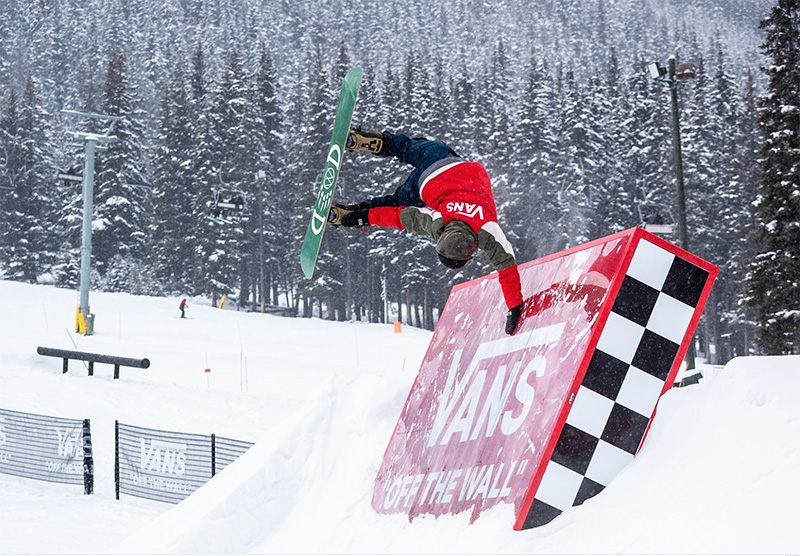
Vans’ Sales Impacted By Pandemic-Related Store Closures
Among its segments, the Active segment revenue decreased 9.1 percent to $1.13 billion. On a constant-dollar basis, sales were down 11 percent. Operating profits in the Active segment were down 29.7 percent to $201.4 million.
Vans’ sales were off 6 percent on a reported basis and 8 percent in constant dollars. Other brands in the Active segment include Eagle Creek, Eastpak, JanSport, Kipling, Napapijri, and Supreme.
The 8 percent currency-neutral decline from Vans reflects sequential improvement from an 11 percent decline in the fiscal second quarter. A surge of 48 percent growth in digital was more than offset by brick & mortar store re-closures in the Americas and the EMEA markets. More than 15 percent of Vans’ stores reclosed at the end of the third quarter. Sales in the quarter for Vans were down 7 percent in the U.S. and 9 percent on a currency-neutral basis in the EMEA region. Vans accelerated to 9 percent currency-neutral growth in the APAC region, led by 58 percent digital growth and 21 percent growth in China.
From a product standpoint, Vans’ all-weather MTE style increased at a double-digit rate and the UltraRange jumped high-single-digits as Vans’ consumers turned to more outdoor and active oriented franchises.
Rendle noted that Vans ranked number one among the largest brands during Singles Day on Tmall, gaining 700,000 new customers. And in November, Vans Customs launched on Tmall, becoming the first global brand to offer a full customization engine on the platform. A collaboration with Bape drove the launch, generating 870,000 unique visitors on the Customs’ site that day. Overall, the Vans Family membership base continues to grow globally, with membership approaching 14 million consumers.
FY21 revenue is expected to decline less than 15 percent on a reported basis, although Q4 revenue is expected to increase at a low double-digit percentage rate. Previously, revenues were expected to decline less than 12 percent for the fiscal year.
Said Rendle, “Although the headline number for Vans reflects the challenging brick & mortar operating environment in the U.S. and Europe, we remain confident in the underlying trajectory of the business and expect at least low double-digit growth in the fourth quarter on a reported basis.”
VF also completed its acquisition of streetwear brand Supreme, which becomes part of the Active segment. Rendle described the purchase as “further validation of the actions we’ve taken over the past four years to position our portfolio into those parts of the market where there is strong consumer engagement and demand. We’re confident the Supreme transaction will serve to spark another layer of transformative growth and value creation for VF and its stakeholders”.
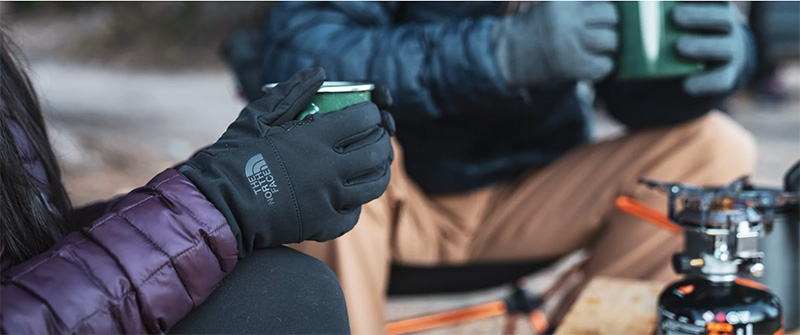
The North Face Delivers Above-Plan Performance
Outdoor segment revenue decreased 5.3 percent to $1.57 billion and was down 7 percent in constant dollars. Outdoor segment operating profits declined 10.7 percent to $311.8 million.
The North Face saw flat revenue on a reported basis and was down 2 percent in constant dollars. The Outdoor segment also includes Altra, Icebreaker, Smartwool, and Timberland.
The North Face’s 2 percent currency-neutral decline marked a notable improvement from the fiscal second quarter’s 26 percent decline.
TNF saw continued sequential improvement in the Americas region and double-digit growth in Europe and Asia. Europe remains a bright spot for TNF with 17 percent growth, including 112 percent digital growth offsetting the impact of significant store closures in the region. Global TNF digital sales jumped 61 percent with accelerated growth across all regions, driving a return to positive DTC growth.
In North America, TNF’s VIP loyalty program drew 840,000 sign-ups, more than a 90 percent increase versus last year.
“TNF continued to drive a significant increase in consumer engagement through authentic and purpose-led marketing activations,” said Rendle. “Core off-mountain icons such as the Nuptse franchise performed well, and the Gucci collab generated tremendous energy with over 1.5 billion media impressions since December launch. You heard that right, 1.5 billion media impressions.”
Mountain product also performed well for The North Face, highlighted by triple-digit growth for Futurelight as the technology expands deeper into its product assortment. Active, its new footwear platform has been well received, exceeding initial sell-in targets for this spring’s launch.
The North Face’s FY21 revenue is expected to decline less than 10 percent on a reported basis, with fourth-quarter revenue expected to increase more than 20 percent. Previously, VF projected TNF’s sales for the fiscal year would decline less than 13 percent. Said Rendle, “We’re pleased with the performance of The North Face and encouraged by the brand’s strong momentum heading into next year.”
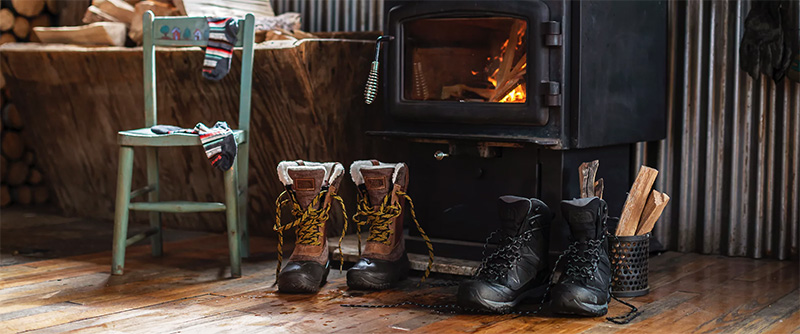
Timberland Impacted By Inventory Shortages In Classics
Timberland’s revenues declined 17 percent as relative strength in apparel and positive growth in outdoor footwear and its Pro business were more than offset by softness in classic footwear, which was significantly impacted by limited inventory availability.
Rendle said Timberland continues to drive brand energy with influencers and retailers with high-profile collaborations and new franchises. The launch in the quarter of its Work Summit boot contributed to record traffic to the Timberland Pro digital site, which saw more than 100 percent growth. Rendle also said VF is encouraged by the early response to the TrueCloud, an eco-friendly franchise made from renewable and recycled materials, and Green Stripe, a new franchise anchored in outdoor.
Timberland’s revenue is still expected to decline less than 19 percent on a reported basis for the full fiscal year. Fourth-quarter revenues are expected to increase mid-single-digits. Said Rendle, “While still early, I’m pleased with Timberland’s progress and the evolution and diversification of Timberland’s new and innovative product portfolio. Continued momentum from Timberland Pro, apparel and non-classic footwear, coupled with improving demand and inventory levels for core classics, position the Timberland brand for continued progress heading into fiscal 2022.”
Dickies Boosted By Youth Appeal
Work segment revenue grew 7.6 percent to $270.2 million and advanced 6 percent on a currency-neutral basis. Segment profit was down 23.6 percent to $22.1 million. Dickies showed an increase of 9 percent on a reported basis and 7 percent in constant dollars.
Other work brands include Bulwark Protection, Horace Small, Kodiak, Red Kap, Terra, VF Solutions, and Walls.
Rendle said Dickies’ growth reflected strong demand across regions and growth across channels. Work-inspired lifestyle product “continues to develop at a rapid pace,” increasing at a double-digit pace across all three regions. Lifestyle product has grown to represent about one-third of Dickies’ revenue, and brand interest continues to over-index in the key 18-to-24-year-old demographic, supported by the United By Dickie’s global campaign.
Companywide, U.S. revenues were down 11 percent in the third quarter. International revenue was flat on a reported basis and off 4 percent in constant dollars.
In North America, over 95 percent of VF’s-owned retail stores were open at the beginning of the third quarter, with all VF-owned retail stores re-opened by mid-October. Since that time, additional stores have been reclosed, with approximately 15 percent of stores closed by the end of the quarter. The majority of the closures were Vans stores, predominantly based in California. Also, other stores are operating with reduced capacity. Stores in North America have begun to re-open since the end of the quarter and, currently, less than 10 percent of stores are closed in the region.
Among international regions, Europe revenue increased 1 percent on a reported basis and was down 4 percent in constant dollars. In the EMEA region, nearly all VF-owned retail stores were open at the beginning of the third quarter. Since that time, additional stores have been reclosed, with approximately 50 percent closed by the end of the quarter. Additional stores in the EMEA region have reclosed since the end of the quarter, and currently, over 60 percent of stores are closed.
Greater China revenue increased 18 percent on a reported basis and 11 percent in constant dollars, including a 22 percent (15 percent in constant dollars) increase in Mainland China. Nearly all of VF’s owned retail stores in the APAC region, including Mainland China, were open during the quarter and remain open.
Sales in the Americas (non-U.S.) were down 17 percent on a reported basis and 16 percent in constant dollars.
Direct-to-consumer (DTC) revenue decreased 2 percent and slid 4 percent in constant dollars despite a 53 percent (49 percent in constant dollars) increase in DTC digital revenue. Wholesale sales were down 10 percent on a reported basis and 17 percent on a currency-neutral basis.
VF ended the third quarter with inventory down 14 percent year-over-year.
Cash and short-term investments at the quarter’s close were $3.9 billion, including approximately $2 billion of cash designated for the acquisition of the Supreme brand completed in the fourth quarter, in addition to $1.9 billion remaining under VF’s revolving credit facility.
Full Year Fiscal 2021 Outlook
VF’s updated full-year fiscal 2021 outlook includes:
- Revenue is expected to be in the range of $9.1 billion to $9.2 billion, reflecting a decrease of 12 percent to 13 percent on an adjusted basis. The updated outlook includes approximately $125 million of revenue from the Supreme brand – this compares to the previous expectation of at least $9.0 billion, reflecting a decrease of roughly 14 percent on an adjusted basis.
- Adjusted earnings per share are expected to be approximately $1.30, reflecting a decrease of roughly 51 percent. The updated outlook includes around 5 cents of adjusted earnings per share from the Supreme brand. This compares to the previous expectation of at least $1.20, reflecting a decrease of approximately 55 percent.
- Adjusted free cash flow is expected to be approximately $650 million. This compares to the previous expectation of greater than $600 million.
Photos courtesy Vans, The North Face

